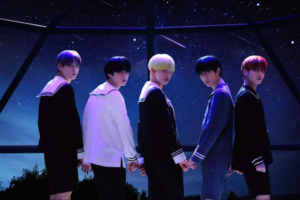Comprehensive Review and Analysis of ‘Your Lie in April’: Anime vs. Manga
“Your Lie in April” is one of those rare stories that leaves an indelible mark on its audience, regardless of whether they experience it through the anime or the manga. This emotionally charged narrative has captivated fans worldwide with its compelling characters, breathtaking music, and heart-wrenching plot twists. In this blog post, we will provide a comprehensive review and analysis of “Your Lie in April,” exploring both the anime and manga versions, discussing key emotional scenes, and analyzing the characters that make this story unforgettable.
Your Lie in April Review: A Journey Through Music and Emotion
At its core, Your Lie in April is a story about music, love, and the journey of self-discovery. Both the anime and manga versions of this tale have been widely praised for their ability to convey deep emotions and complex relationships. However, each medium brings its own unique strengths to the table.
The Your Lie in April anime review often highlights the stunning visuals and the beautifully composed soundtrack that elevate the emotional impact of the story. The use of color, light, and animation to depict the characters’ emotional states adds a layer of depth that is hard to replicate in the manga. The anime also benefits from its ability to incorporate actual music, allowing viewers to hear the performances that are so central to the plot. This auditory experience enhances the connection between the audience and the characters, making moments of triumph and tragedy all the more powerful.
On the other hand, the Your Lie in April manga review points out the detailed artwork and the pacing that allows for a more introspective experience. The manga offers readers the chance to linger on each panel, absorbing the intricacies of the characters’ expressions and the subtle foreshadowing embedded in the illustrations. The pacing in the manga is more deliberate, giving readers the opportunity to fully immerse themselves in the emotional journey of the protagonist, Kousei Arima.
In both versions, the story remains a poignant exploration of grief, love, and the power of music to heal and inspire. The choice between anime and manga ultimately comes down to personal preference—whether you prioritize the immersive audiovisual experience of the anime or the introspective, detailed storytelling of the manga.
Your Lie in April: Emotional Scenes That Define the Story
One of the aspects that sets “Your Lie in April” apart from other anime and manga is its ability to evoke deep emotional responses from its audience. The Your Lie in April emotional scenes are carefully crafted to resonate with viewers and readers, leaving a lasting impact that lingers long after the story has ended.
Among the most powerful moments in the story is the scene where Kousei finally comes to terms with his mother’s death. This moment is a turning point for Kousei, as he realizes that his mother’s strictness was motivated by her desire for him to find his own voice in music. The best moments in Your Lie in April are often the ones where the characters confront their inner demons, leading to profound personal growth. These scenes are a testament to the strength of the storytelling, as they seamlessly blend emotional intensity with character development.
The Your Lie in April ending explained section of any review is likely to delve into the heartbreaking yet hopeful conclusion of the story. The revelation of Kaori’s illness and her feelings for Kousei adds layers of complexity to the narrative, making the ending both tragic and uplifting. The final performance, where Kousei plays the piano in a duet with Kaori’s spirit, serves as a beautiful metaphor for the enduring power of music and love, even in the face of loss.
Your Lie in April Character Analysis: The Heart of the Story
The characters in “Your Lie in April” are central to its emotional impact. Each character is carefully developed, with their own unique struggles and growth throughout the story. A Your Lie in April character analysis reveals the depth of these characters and how they contribute to the overall narrative.
Kousei Arima, the protagonist, is a former piano prodigy who has been unable to hear the sound of the piano since the death of his mother. His journey from a broken, guilt-ridden boy to a confident musician is the backbone of the story. Kousei’s character development is beautifully depicted, as he learns to overcome his fears and reconnect with the music that once brought him so much joy.
Kaori Miyazono, the free-spirited violinist, serves as the catalyst for Kousei’s transformation. Her vibrant personality and passion for music inspire Kousei to break free from his self-imposed limitations. However, Kaori’s own struggles, particularly her battle with a terminal illness, add a layer of tragedy to her character. The Is Your Lie in April worth watching? question is often answered with a resounding yes, largely due to the strength of these characters and their compelling arcs.
The supporting characters, including Tsubaki and Watari, also play crucial roles in Kousei’s journey. Tsubaki’s unrequited love for Kousei and her struggle to come to terms with her feelings add emotional depth to the story. Watari, while seemingly a carefree character, provides moments of wisdom and support that help Kousei navigate his complex emotions.
The Sound of Emotions: A Review of the ‘Your Lie in April’ Soundtrack
One cannot discuss “Your Lie in April” without mentioning its incredible soundtrack. The music in this story is not just a backdrop; it is an integral part of the narrative. The Your Lie in April soundtrack review highlights how the music enhances the emotional experience of the story.
The soundtrack features a mix of classical pieces and original compositions, each carefully selected to reflect the emotions of the characters. Pieces like “Clair de Lune” by Debussy and “Love’s Sorrow” by Fritz Kreisler are used to great effect, underscoring the emotional highs and lows of the story. The original compositions, such as “Again” and “My Truth,” capture the essence of the characters’ journeys, making the music an indispensable part of the storytelling.
For those who have experienced the anime, the soundtrack serves as a powerful reminder of the emotions felt during key scenes. Even for those who may not be familiar with classical music, the soundtrack is accessible and deeply moving, making it a highlight of the anime.
Why ‘Your Lie in April’ is a Must-Watch (or Read)
In conclusion, Your Lie in April is a story that transcends the boundaries of anime and manga, offering a deeply emotional experience that resonates with its audience. Whether you choose to watch the anime or read the manga, you are in for a journey that explores the complexities of love, loss, and the healing power of music.
The Your Lie in April review, character analysis, and soundtrack review all point to the same conclusion: this is a story worth experiencing. The emotional scenes, the beautifully crafted characters, and the stunning music all come together to create a narrative that stays with you long after the final note has played.
For those interested in exploring the themes of music and emotional growth further, Regent Studies offers resources that delve into the art of storytelling and character development. Additionally, if you’re curious about the impact of music in anime, check out this external review on how soundtracks shape the viewing experience.
“Your Lie in April” is more than just a story—it’s an emotional journey that touches the heart and soul. Whether you are drawn to the music, the characters, or the emotional depth, this is one anime (or manga) that you won’t want to miss.




